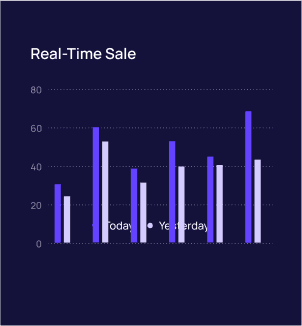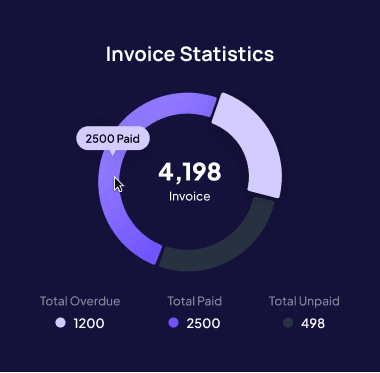Bootstrapping New Venture: The Case for Going Back to Basics
Bootstrapping New Venture: The Case for Going Back to Basics
Excessive debt can drain your cash flow due to high interest payments.
Excessive debt can drain your cash flow due to high interest payments.

Forecasting Cash Flow
Accurate cash flow forecasting is crucial for financial planning. Without it, businesses risk running into liquidity problems that can lead to operational disruptions or even bankruptcy.
To create a reliable forecast:
Use historical data: Review past cash inflows and outflows to predict future trends.
Identify seasonal trends: Many businesses experience fluctuations due to seasonality. Plan accordingly.
Update forecasts regularly: Market conditions and customer behavior can change, so refine projections monthly or quarterly.
A well-maintained cash flow forecast helps you anticipate shortfalls and surpluses, allowing you to adjust spending or take advantage of investment opportunities.
Managing Accounts Receivable Efficiently
Late payments from customers can cause significant cash flow challenges. To keep your cash flow healthy, implement strategies that encourage prompt payments.
Establish clear payment terms: Define due dates, late fees, and interest penalties upfront.
Offer early payment incentives: Providing discounts for early payments can accelerate cash inflows.
Automate invoicing and reminders: Use accounting software to send automatic payment reminders to customers.
Follow up promptly on overdue invoices: Implement a structured collection process to avoid long-standing receivables.

Controlling Accounts Payable
Managing how and when you pay your suppliers can have a significant impact on cash flow. Rather than paying invoices immediately, optimize your accounts payable strategy.
Negotiate extended payment terms: Many suppliers are open to longer payment cycles if you have a strong relationship.
Use just-in-time (JIT) inventory management: This minimizes cash tied up in stock while ensuring you have what you need.
Prioritize essential payments: Rent, payroll, and utilities should take priority over discretionary expenses.
Take advantage of early payment discounts when beneficial: If cash flow allows, paying early can save money in the long run.
By carefully scheduling payments, businesses can maintain liquidity and keep cash available for critical operations.
Operating Expenses
Cutting unnecessary costs is a direct way to improve cash flow. Many businesses lose money through inefficient spending without realizing it.
Conduct regular expense audits: Analyze monthly expenses and identify non-essential costs.
Negotiate lower costs with suppliers and vendors: If you’ve been a long-term customer, request better pricing.
Reduce energy and utility costs: Simple changes like energy-efficient lighting and equipment can save money.
Streamline staffing costs: If necessary, use part-time or contract employees to adjust labor costs based on demand.
By keeping expenses lean, your business can operate more efficiently and preserve cash for strategic investments.
Diversifying Revenue Streams
Relying on a single source of income is risky. Expanding your revenue streams can help maintain consistent cash flow, even during economic downturns.
Introduce complementary products or services: Expand your offerings based on customer needs.
Explore new customer segments: Identify underserved markets that align with your business capabilities.
Adopt subscription-based models: Recurring revenue streams provide predictable cash flow.
Leverage e-commerce and digital sales: Online sales channels can provide additional revenue opportunities.
Diversifying income sources ensures that if one stream slows down, your business continues generating revenue from others.

Forecasting Cash Flow
Accurate cash flow forecasting is crucial for financial planning. Without it, businesses risk running into liquidity problems that can lead to operational disruptions or even bankruptcy.
To create a reliable forecast:
Use historical data: Review past cash inflows and outflows to predict future trends.
Identify seasonal trends: Many businesses experience fluctuations due to seasonality. Plan accordingly.
Update forecasts regularly: Market conditions and customer behavior can change, so refine projections monthly or quarterly.
A well-maintained cash flow forecast helps you anticipate shortfalls and surpluses, allowing you to adjust spending or take advantage of investment opportunities.
Managing Accounts Receivable Efficiently
Late payments from customers can cause significant cash flow challenges. To keep your cash flow healthy, implement strategies that encourage prompt payments.
Establish clear payment terms: Define due dates, late fees, and interest penalties upfront.
Offer early payment incentives: Providing discounts for early payments can accelerate cash inflows.
Automate invoicing and reminders: Use accounting software to send automatic payment reminders to customers.
Follow up promptly on overdue invoices: Implement a structured collection process to avoid long-standing receivables.

Controlling Accounts Payable
Managing how and when you pay your suppliers can have a significant impact on cash flow. Rather than paying invoices immediately, optimize your accounts payable strategy.
Negotiate extended payment terms: Many suppliers are open to longer payment cycles if you have a strong relationship.
Use just-in-time (JIT) inventory management: This minimizes cash tied up in stock while ensuring you have what you need.
Prioritize essential payments: Rent, payroll, and utilities should take priority over discretionary expenses.
Take advantage of early payment discounts when beneficial: If cash flow allows, paying early can save money in the long run.
By carefully scheduling payments, businesses can maintain liquidity and keep cash available for critical operations.
Operating Expenses
Cutting unnecessary costs is a direct way to improve cash flow. Many businesses lose money through inefficient spending without realizing it.
Conduct regular expense audits: Analyze monthly expenses and identify non-essential costs.
Negotiate lower costs with suppliers and vendors: If you’ve been a long-term customer, request better pricing.
Reduce energy and utility costs: Simple changes like energy-efficient lighting and equipment can save money.
Streamline staffing costs: If necessary, use part-time or contract employees to adjust labor costs based on demand.
By keeping expenses lean, your business can operate more efficiently and preserve cash for strategic investments.
Diversifying Revenue Streams
Relying on a single source of income is risky. Expanding your revenue streams can help maintain consistent cash flow, even during economic downturns.
Introduce complementary products or services: Expand your offerings based on customer needs.
Explore new customer segments: Identify underserved markets that align with your business capabilities.
Adopt subscription-based models: Recurring revenue streams provide predictable cash flow.
Leverage e-commerce and digital sales: Online sales channels can provide additional revenue opportunities.
Diversifying income sources ensures that if one stream slows down, your business continues generating revenue from others.

Forecasting Cash Flow
Accurate cash flow forecasting is crucial for financial planning. Without it, businesses risk running into liquidity problems that can lead to operational disruptions or even bankruptcy.
To create a reliable forecast:
Use historical data: Review past cash inflows and outflows to predict future trends.
Identify seasonal trends: Many businesses experience fluctuations due to seasonality. Plan accordingly.
Update forecasts regularly: Market conditions and customer behavior can change, so refine projections monthly or quarterly.
A well-maintained cash flow forecast helps you anticipate shortfalls and surpluses, allowing you to adjust spending or take advantage of investment opportunities.
Managing Accounts Receivable Efficiently
Late payments from customers can cause significant cash flow challenges. To keep your cash flow healthy, implement strategies that encourage prompt payments.
Establish clear payment terms: Define due dates, late fees, and interest penalties upfront.
Offer early payment incentives: Providing discounts for early payments can accelerate cash inflows.
Automate invoicing and reminders: Use accounting software to send automatic payment reminders to customers.
Follow up promptly on overdue invoices: Implement a structured collection process to avoid long-standing receivables.

Controlling Accounts Payable
Managing how and when you pay your suppliers can have a significant impact on cash flow. Rather than paying invoices immediately, optimize your accounts payable strategy.
Negotiate extended payment terms: Many suppliers are open to longer payment cycles if you have a strong relationship.
Use just-in-time (JIT) inventory management: This minimizes cash tied up in stock while ensuring you have what you need.
Prioritize essential payments: Rent, payroll, and utilities should take priority over discretionary expenses.
Take advantage of early payment discounts when beneficial: If cash flow allows, paying early can save money in the long run.
By carefully scheduling payments, businesses can maintain liquidity and keep cash available for critical operations.
Operating Expenses
Cutting unnecessary costs is a direct way to improve cash flow. Many businesses lose money through inefficient spending without realizing it.
Conduct regular expense audits: Analyze monthly expenses and identify non-essential costs.
Negotiate lower costs with suppliers and vendors: If you’ve been a long-term customer, request better pricing.
Reduce energy and utility costs: Simple changes like energy-efficient lighting and equipment can save money.
Streamline staffing costs: If necessary, use part-time or contract employees to adjust labor costs based on demand.
By keeping expenses lean, your business can operate more efficiently and preserve cash for strategic investments.
Diversifying Revenue Streams
Relying on a single source of income is risky. Expanding your revenue streams can help maintain consistent cash flow, even during economic downturns.
Introduce complementary products or services: Expand your offerings based on customer needs.
Explore new customer segments: Identify underserved markets that align with your business capabilities.
Adopt subscription-based models: Recurring revenue streams provide predictable cash flow.
Leverage e-commerce and digital sales: Online sales channels can provide additional revenue opportunities.
Diversifying income sources ensures that if one stream slows down, your business continues generating revenue from others.
Recent Posts
Recent Posts
Recent Posts

Similar Blog You May Like
Similar Blog You May Like
Similar Blog You May Like


Unlock Your Financial Potential with Automation
Create dynamic budgets with predictive insights and scenario planning to help you manage future cash flows.




Unlock Your Financial Potential with Automation
Create dynamic budgets with predictive insights and scenario planning to help you manage future cash flows.




Unlock Your Financial Potential with Automation
Create dynamic budgets with predictive insights and scenario planning to help you manage future cash flows.







